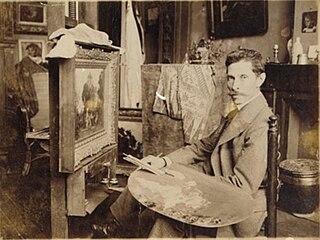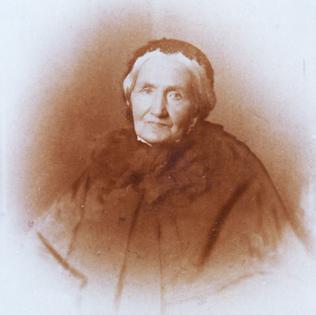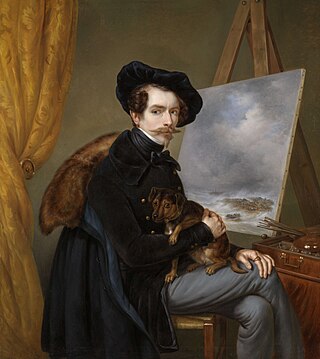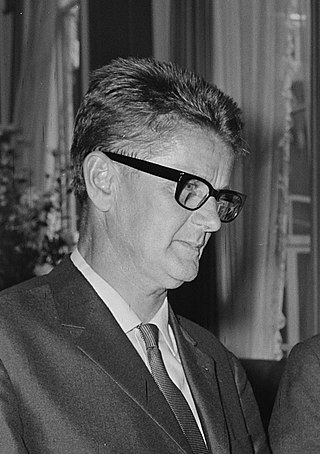
The Exhibition of Living Masters (Dutch: Tentoonstelling van Levende Meesters) was the name given to a series of exhibitions of contemporary art, held in various cities in the Netherlands, from 1808 to 1917.

The Exhibition of Living Masters (Dutch: Tentoonstelling van Levende Meesters) was the name given to a series of exhibitions of contemporary art, held in various cities in the Netherlands, from 1808 to 1917.
Louis Bonaparte, the King of Holland, took the initiative to organize the first exhibition; inspired by the Paris Salon, an exhibition that had been held annually since 1673. It was presented in the small court-martial room at the Royal Palace, on Dam Square, in Amsterdam. [1] Originally, the plan was to hold the event annually, alternating between Amsterdam and The Hague. Later, other cities, such as 's-Hertogenbosch and Rotterdam became involved, and the frequency changed. Organization was in the hands of local committees.
Both professional and amateur artists could submit their paintings. They could also be offered for sale, without paying a commission. Women were allowed to participate, even though they could not attend any art academies until the latter part of the century. The first exhibition received 111 submissions; some anonymously. The entrants included Charles Howard Hodges, Jan Willem Pieneman, Edouard Taurel , and Johan Bernard Scheffer. [2] Beginning in 1810, engravings, sculptures, and medals could also be submitted.
In the 1820s, professional artists began to complain that the presence of amateurs was a threat to their livelihood. As a result, submission standards were amended, requiring works to have "genoegzame kunstwaarde" (sufficient artistic value). In the 1850s, the first photographs (daguerreotypes) were submitted. More protests followed, so many were refused or removed. [3]
Nevertheless, the overall requirements remained general enough to allow many young artists a chance to have their débuts at the Exhibition; including Jan Hoynck van Papendrecht (1884), Isaac Israëls (1881), Taco Mesdag (1849), and Maurits Verveer (1851). From 1840, foreign artists were allowed to participate and, from 1860, gold and silver medals were awarded.
The final exhibition was held at the Rotterdam Academy in 1917. World War I had created serious financial and organizational problems. After the war, no attempt was made to continue. In 1932, the term "Living Masters" was used in connection with an exhibition at the Stedelijk Museum Amsterdam, but it was an unrelated event.
A catalogue was made for each exhibition, containing an overview of the submitted artworks and participating artists. The catalogues have been digitized by the Netherlands Institute for Art History. [4]


The Hague School is a group of artists who lived and worked in The Hague between 1860 and 1890. Their work was heavily influenced by the realist painters of the French Barbizon school. The painters of the Hague school generally made use of relatively somber colors, which is why the Hague School is sometimes called the Gray School.

The Kunstmuseum Den Haag is an art museum in The Hague in the Netherlands, founded in 1866 as the Museum voor Moderne Kunst. Later, until 1998, it was known as Haags Gemeentemuseum, and until the end of September 2019 as Gemeentemuseum Den Haag. It has a collection of around 165,000 works, over many different forms of art. In particular, the Kunstmuseum is renowned for its large Mondrian collection, the largest in the world. Mondrian's last work, Victory Boogie-Woogie, is on display at the museum.
Hermanus (Herman) Berserik was a Dutch painter and print maker. He was a member of the Pulchri Studio in The Hague. He studied art at that city's Royal Academy of Art, where his teachers included Willem Schrofer, Willem Jacob Rozendaal, and Rein Draijer.

Johannes Evert Hendrik Akkeringa was part of the second generation of the Hague School painters. Akkeringa is primarily known for his paintings and watercolours of women and playing children at the beach, women mending nets and intimate tea-time conversations.

The Amsterdamse Joffers were a group of women artists who met weekly in Amsterdam at the end of the 19th and beginning of the 20th century. They supported each other in their professional careers. Most of them were students of the Rijksakademie van beeldende kunsten and belonged to the movement of the Amsterdam Impressionists. Each one became a successful artist. As a group they contributed to the social acceptance in the Netherlands of women becoming professional artists.

Jacob Jan van der Maaten was a Dutch painter and etcher. Van der Maaten was a pupil of Hendrikus van de Sande Bakhuyzen and studied at the Royal Academy of Art, The Hague. In 1852 he became a member of the Royal Academy of Fine Arts in Amsterdam. Later, Van der Maaten became teacher at the so-called King's School in Apeldoorn (1866–1879).

Adriana Johanna Haanen was a Dutch painter.

Berend Strik is a Dutch visual artist working and living in Amsterdam.

Johan Hendrik Louis Meijer was a Dutch painter, etcher, lithographer, and draftsman. He painted in the Romantic tradition and is best known for his seascapes.

Jan Hillebrand Wijsmuller was a Dutch painter. He belongs to The 2. Golden Age of Dutch Painting.

Dora Dolz de Herman was a Spanish-Dutch artist, best known for her outdoor ceramic works in the form of chairs and sofas.

Henricus Petrus Cornelis (Kees) Verschuren is a Dutch sculptor, painter and former lecturer at the Willem de Kooning Academie in Rotterdam, known for his monumentalist sculptures in public places in the Netherlands.
Teunis (Teun) Jacob was a Dutch wall painter and sculptor, who lived and worked in Rotterdam since the early 1950s. He made both figure and nonrepresentational art.
Daniël (Daan) van Golden was a Dutch artist, who has been active as a painter, photographer, collagist, installation artist, wall painter and graphic artist. He is known for his meticulous paintings of motives and details of everyday life and every day images.

Franz Wilhelm Maria Deutmann was a Dutch painter and photographer. He was a member of Arti et Amicitiae and is considered to be part of the Laren School, an offshoot of the Hague School, which is an independent part of the international movement of impressionism.

Bart Cassiman (1961), is an international freelance-curator, art critic and editor, is an art historian and studied press- and communication sciences at the Ghent University (1979-1984).

Anna Adelaïde Abrahams, was a Dutch still life painter.

Casparus Bernardus Oorthuys, known as Cas Oorthuys, was a Dutch photographer and designer active from the 1930s until the 1970s.

De Vloek was a squatted, self-managed social centre in The Hague, the Netherlands, between 2002 and 2015. Located on Hellingweg 127 in Scheveningen, beside the North Sea, the squat hosted workplaces, living spaces, a venue, and a vegan restaurant. The local council tolerated the occupation until 2014, when it decided to sell the building. A political struggle over the eviction began; some political parties supported the squatters and the Scheveningen Pier was briefly occupied as a protest action. A deal was made for the squatters to move to a former school building and the Vloek was eventually evicted in September 2015.
Jeroen Eisinga is a contemporary video artist from the Netherlands. His work is characterised by its performance like character and its plots where an ordeal is often central. Simplicity is of key importance to Eisinga. His work is shot on film and is shot on 16mm as well as on 35mm format film.
![]() Media related to Exhibition of Living Masters at Wikimedia Commons
Media related to Exhibition of Living Masters at Wikimedia Commons